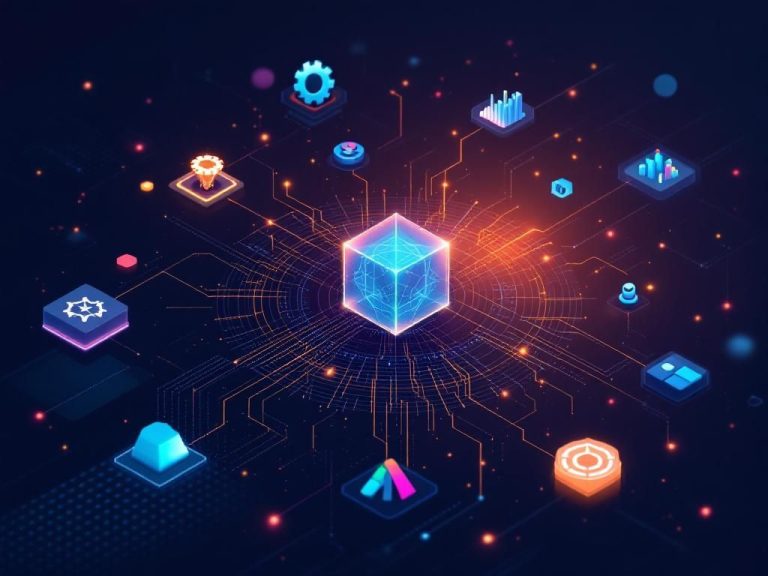In today’s fast-paced tech environment, organizations are inundated with data from various sources. To stay competitive, businesses need to harness this data effectively. One of the most transformative tools at their disposal is real-time AI dashboards, which enable IT teams to visualize and analyze data instantly. These dashboards can provide insights that lead to improved decision-making, enhanced operational efficiency, and a better understanding of business performance metrics.
Understanding Real-Time AI Dashboards
Real-time AI dashboards integrate artificial intelligence with data visualization to provide instant analysis and feedback. Unlike traditional dashboards that present static data, real-time dashboards can process incoming data streams, allowing organizations to respond to trends and anomalies as they happen.
Key Components of Real-Time AI Dashboards
- Data Integration: Seamless integration with various data sources such as databases, APIs, and IoT devices.
- Dynamic Visualizations: Interactive charts, graphs, and maps that update in real time to reflect the latest data.
- AI-Driven Insights: Advanced algorithms that analyze data to provide predictive insights and recommendations.
- User Customization: Flexibility for users to tailor the dashboard to their specific needs and preferences.
The Benefits of Implementing AI Dashboards in IT
Organizations that invest in real-time AI dashboards can enjoy numerous advantages over their competitors. Some of these benefits include:
1. Enhanced Decision-Making
With real-time data at their fingertips, IT teams can make informed decisions quickly. This is crucial in situations where time is of the essence.
2. Operational Efficiency
AI dashboards can automate data collection and reporting processes, reducing manual effort and minimizing human error. This allows IT staff to focus on strategic initiatives rather than routine data management.
3. Proactive Problem Solving
Real-time monitoring enables organizations to identify and address issues before they escalate. For example:
- Detecting system outages or performance bottlenecks.
- Identifying security threats or compliance risks.
- Monitoring resource usage to optimize costs.
4. Improved Customer Experience
By leveraging insights from real-time dashboards, organizations can better understand customer behaviors and preferences, allowing them to tailor their services accordingly.
Best Practices for Implementing Real-Time AI Dashboards
To maximize the effectiveness of real-time AI dashboards, organizations should adhere to certain best practices:
1. Define Clear Objectives
Before implementing a dashboard, it’s essential to establish what you hope to achieve. Whether it’s improving operational efficiency, reducing downtime, or enhancing customer satisfaction, having clear objectives will guide the implementation process.
2. Choose the Right Tools and Platforms
Selecting the right dashboard software is crucial. Consider factors such as:
| Feature | Importance |
|---|---|
| Data Integration Capabilities | High |
| User Interface Design | Medium |
| Customization Options | Medium |
| Scalability | High |
| AI Features | High |
3. Ensure Data Quality
The effectiveness of AI dashboards heavily relies on the quality of the data being fed into them. Regularly assess data integrity and accuracy to ensure reliable insights.
4. Train Your Team
Proper training is essential for team members to fully leverage the capabilities of real-time dashboards. This includes understanding how to interpret data and make data-driven decisions.
Integrating AI Dashboards with Existing IT Infrastructure
To fully realize the potential of real-time AI dashboards, organizations must integrate them seamlessly with their existing IT infrastructure. This involves:
- Assessing Current Systems: Understand the current landscape of databases, applications, and tools in use.
- Establishing Connectivity: Ensure that the dashboard can connect with existing data sources through APIs or other integration methods.
- Creating a Data Governance Framework: Establish protocols for data access, sharing, and security to ensure compliance and protect sensitive information.
The Future of Real-Time AI Dashboards
The future of AI dashboards seems promising, with trends indicating that they will become more intuitive and integrated into daily operations. Here are some emerging trends:
1. Increased Use of Machine Learning
As machine learning algorithms become more sophisticated, we can expect AI dashboards to provide even deeper insights and predictive analytics.
2. Enhanced User Experience
Advancements in user interface design will make dashboards more interactive and user-friendly, allowing non-technical users to navigate and utilize the data effectively.
3. Greater Focus on Security
With an increased focus on data privacy and security, future dashboards will likely incorporate advanced security features to protect sensitive information.
Conclusion
The implementation of real-time AI dashboards offers a revolutionary way for organizations to leverage their data for strategic advantage. By embracing these tools, IT teams can transform raw data into actionable insights, ensuring they remain agile in an ever-evolving landscape. As technology continues to advance, it is imperative for businesses to adopt practices that not only enhance operational efficiency but also drive innovation and growth.
FAQ
What are real-time AI dashboards?
Real-time AI dashboards are visual tools that present data analytics and insights instantly, using artificial intelligence to help organizations make informed decisions quickly.
How can real-time AI dashboards optimize IT operations?
Real-time AI dashboards optimize IT operations by providing immediate access to performance metrics, identifying bottlenecks, and enabling proactive issue resolution.
What industries benefit from real-time AI dashboards?
Industries such as healthcare, finance, retail, and manufacturing benefit significantly from real-time AI dashboards by enhancing operational efficiency and decision-making.
Are real-time AI dashboards customizable?
Yes, real-time AI dashboards can be customized to display specific metrics and KPIs that are relevant to an organization’s unique needs and objectives.
What tools are commonly used to create real-time AI dashboards?
Common tools for creating real-time AI dashboards include Tableau, Power BI, and Google Data Studio, which integrate AI capabilities for enhanced data visualization.
How does real-time AI dashboard technology impact data security?
Real-time AI dashboard technology can enhance data security by incorporating advanced analytics that detect anomalies and potential threats in real-time.


